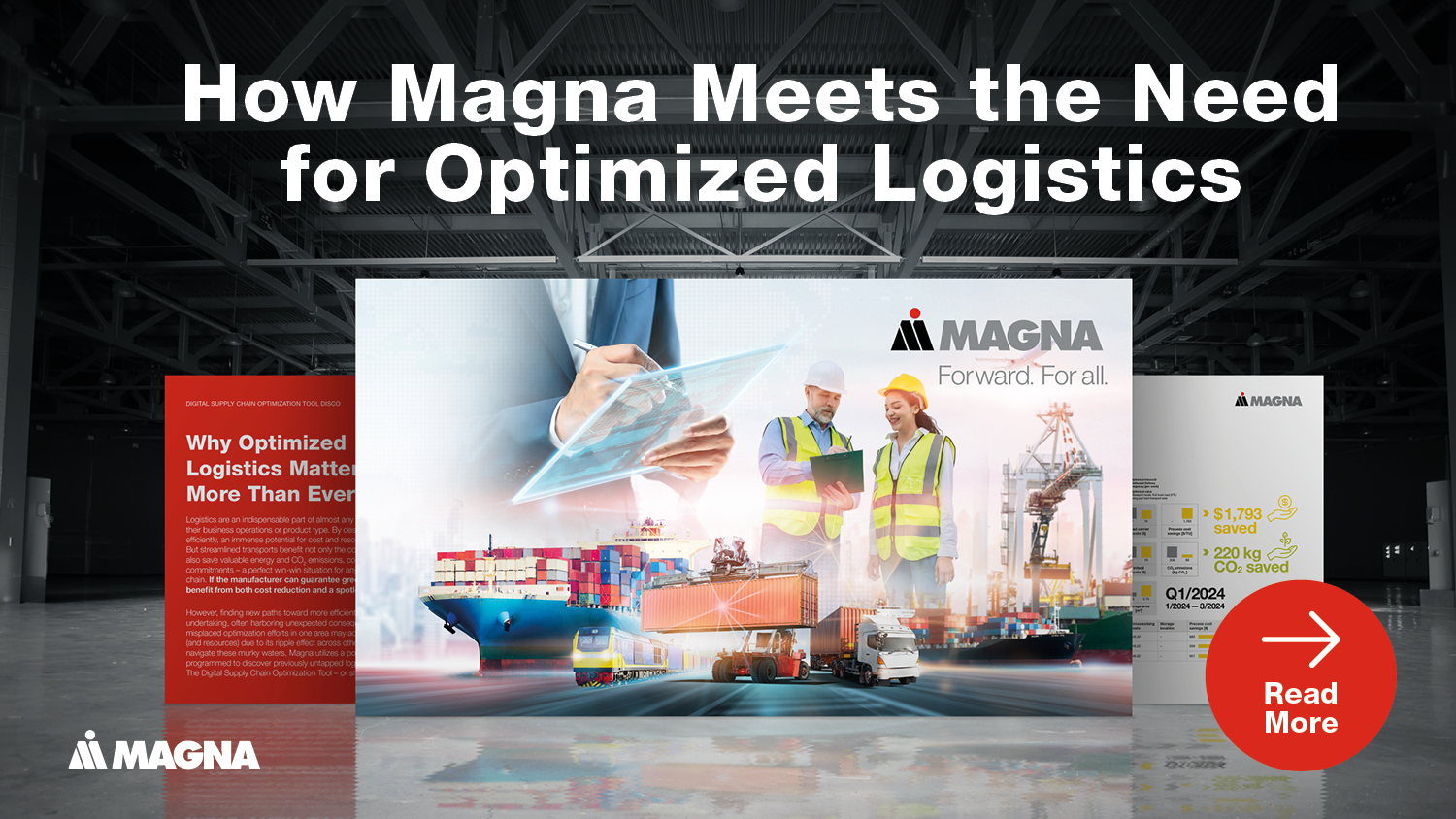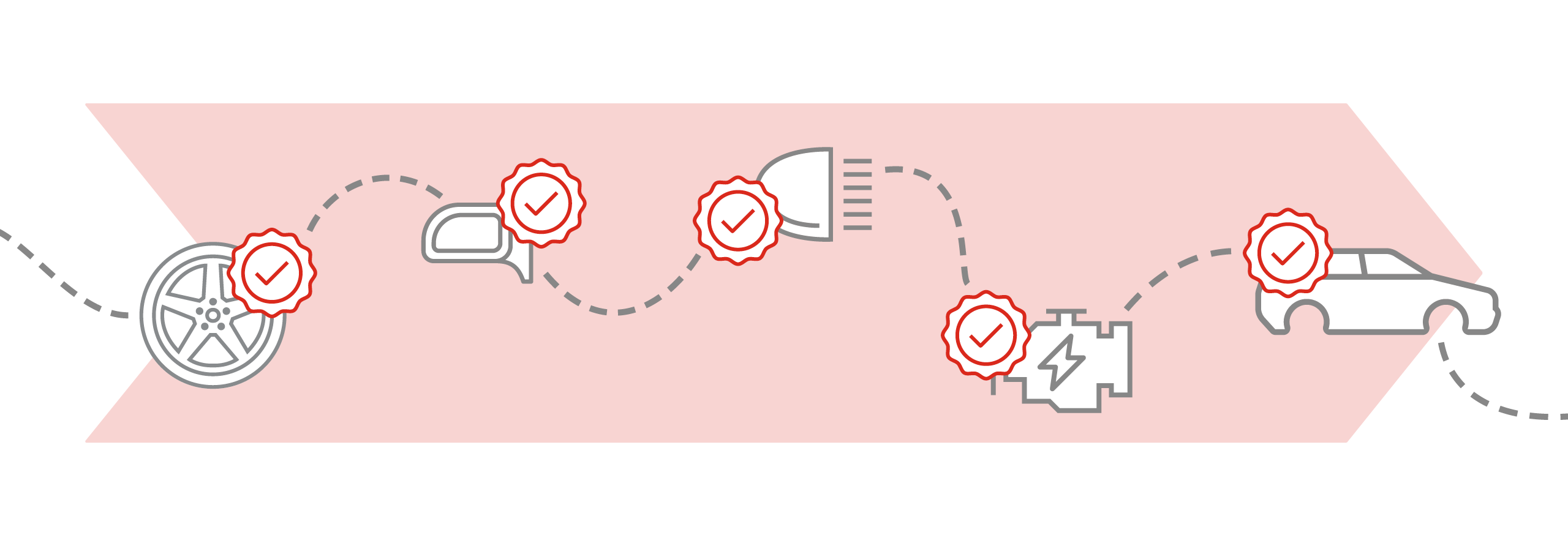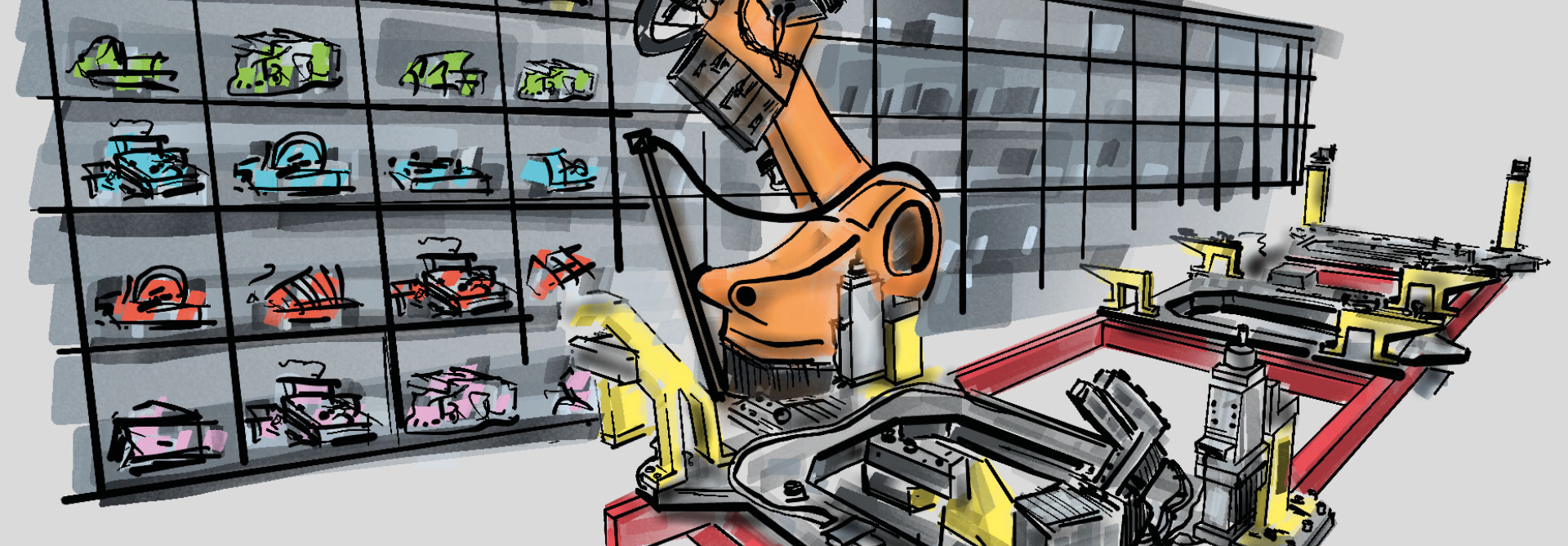
MULTI-OEM LOGISTICS: MULTIPLE EXTERNAL STRUCTURES
In the automotive industry, the framework conditions in a multi-OEM production facility are different to those in a typical manufacturer's factory. All the different products come with their own respective structures and sourcing strategies, according to the manufacturer’s agreements. Different suppliers often use different systems for parts numbering, packaging and load carriers.
All these differences create a far more complex situation than with a smaller number of suppliers working with standardized systems and processes. One particular challenge of multi-OEM logistics is to optimize with as much standardization as possible despite the different customer requirements.
Intralogistics is also more complex. For example, if different assembly stations are required for the same modules or components for different vehicles due to their design. This, in turn, increases the demands on internal sequencing so that the components can be brought to the production line on time for the respective vehicle. This requires particularly precise control of all different supply chains. For production at Magna in Graz, supplier parts and modules currently come from around 1700 different external pick-up points which need to be managed in the logistics network.
DIFFERENT SOURCING DEPENDING ON THE PROJECT
Who determines the suppliers varies from project to project and is based on how the sourcing is agreed upon. There is a wide range of possibilities, starting with the manufacturer being responsible for sourcing and commissioning either singular parts or complete modules. At the other end of the spectrum is the complete transfer of sourcing to the contract manufacturer. This approach can be especially attractive for new entrants in the automotive industry who cannot or do not want to handle these aspects themselves – and therefore gladly outsource them to a reliable partner.
In any case, the contract manufacturer must take care of the entire logistics - from inbound logistics (the delivery of materials) to intralogistics (the transportation processes within the plant) and outbound logistics, the delivery of the finished vehicles. That being said, the client can choose whichever solution best suits his needs.
TRANSPARENT SUPPLY CHAINS FOR GREATER RESILIENCE
Global disruptions of recent years – the Covid pandemic, the Suez Canal blockade and various armed conflicts – were not the first to show how vulnerable the usual global system of trade deliveries truly is. Due to a lack of materials, entire industries were effectively at a standstill for prolonged periods of time. Of course, a contract manufacturer in the automotive industry has little influence over these types of issues. Nevertheless, to achieve greater resilience in the event of such disruptions, certain tools have been developed.
To at least minimize the consequences of said disruptions, an important strategy is to establish a transparent supply chain. For over 20 years, Magna has been working consistently to make its transport logistics transparent. Even before the pandemic, there were repeated global crises that made the supply chains’ susceptibility to disruption painfully apparent, such as the global financial crisis in 2007 or the Fukushima disaster in 2011.
In 2003, a comprehensive transport management system was introduced at Magna and has been further developed since to bring transparency to the supply chains. In fact, the last update to this system was rolled out exactly one day before the Covid shutdown was implemented at the Graz location, so that it was possible to abruptly shut down the supply chains from one moment to the next.
Of course, this does not eliminate the problem of delayed material deliveries. But the earlier potential disruptions are detected, the more time the manufacturer has to react and take countermeasures to minimize the impact of delivery interruptions on the production process.
DIGITIZATION AS A PREREQUISITE FOR TRANSPARENCY
Digitalizing the logistics is inevitable if the goal is to make the material flow visible – from the supplier through the entire transport and logistics chain to the installation station on the production line. But digitalization is not just a buzzword or an end in itself. It enables tracking the location of every delivery at any given time. This makes it possible to determine whether disruptions will occur on the way to the plant or assembly line and how long they are likely to be in effect.
If necessary, appropriate measures can be taken to avoid a production standstill. This way, the expediter is provided with the status and expected arrival of any part at the part number level at an early stage.
The first precondition for this involves integrated IT systems. A well-functioning ERP system calculates material requirements in the plant, including call-off orders from suppliers. The transport management system also integrates suppliers and service providers into the processes on a collaborative level. This way, real-time transport visibility can be achieved – and has been in use in multi-OEM logistics at Magna for several years.
COUNTERMEASURES TO INTERRUPTED SUPPLY CHAINS
For highly critical transports, Magna has been using real-time tracking since 2016. This provides automated notification if a transport fails to arrive on schedule. This is particularly important as possible countermeasures or alternative measures can be implemented more easily and ultimately more cost-effectively the earlier a deviation from the delivery schedule is known.
It can provide benefits for a multi-OEM manufacturer such as Magna if several different vehicles are manufactured on one line – and specific material deliveries for one of the manufactured products are not available. For example, if two or three different model series are built on one line, at least in principle it is possible to temporarily maintain the operation and capacity utilization of the line by producing more of the other series’ vehicles there.
Of course, this option is only profitable if there is a foreseeably longer disruption, since the change of production plans also requires complex logistics reorganizations that require a certain lead time. Additionally, the order situation must also allow such a shift.
DIGITAL SUPPLY CHAIN OPTIMIZATION
The digital optimization of the supply chain offers a fundamentally new approach. At Magna, this comprehensive analysis of material logistics is known as DiSCO - an abbreviation for digital supply chain optimization. This system, which was recognized with an award by the Association of Materials Management, Purchasing and Logistics of Austria, holistically records all relevant procurement processes and areas to increase efficiency.
Instead of minimizing individual cost factors in isolation, logistics costs – and therefore manufacturing costs – are considered as a whole. This is because individual optimizations can sometimes contradict each other. For example, reducing stock cuts storage costs but requires more frequent transportation, or the cheapest transport route can increase ordering costs or necessitate higher commission costs. In collaboration with an external partner, a mathematical model and a method to find a holistic optimum has been developed for DiSCO.
The supply chain costs are therefore optimized in terms of total costs, starting with the ordering costs, transport, load carrier costs, reception in the plant, internal transport, warehousing and sequencing to the amount of capital tied to the products inside the plant and on the transport route. By analyzing this data, an intelligent algorithm determines the optimum delivery frequency for each component, which has also shown that, for example, a slightly higher stock level can be economical if this can save on transport and thus reduce overall costs.
REAL TIME TRACKING AS A BASIS FOR LONG DISTANCE JIS
For relatively large-format parts with large variance, sequencing directly at the supplier and performing a JIS (Just In Sequence) feed directly on the production line is the optimal and now industry-standard method. However, this only used to work for suppliers located in closer proximity to the plant. Nowadays, JIS parts supply also works over longer distances and longer periods of time.
The idea behind long-distance JIS is to build up a metaphorical pearl necklace as a supply chain. The sequence of vehicle orders is fixed for seven or more days. This makes it possible to very precisely determine in advance which part must be installed when, even for deliveries over longer distances. This provides the supplier with a longer lead time for the respective vehicle part. Therefore, they can utilize their own production capacity more flexibly and are no longer tied to proximity to the manufacturer.
To implement the long-distance JIS in a fail-safe manner at Magna, a real-time tracking system down to the level of the individual trailer truck was introduced. This is why the system known as MIATT – the abbreviation stands for Magna Intelligent Arrival Trailer Tracking – was used first for long-distance JIS deliveries. To ensure a flawless JIS parts feed, each truck trailer must also maintain its sequence and therefore be able to be registered and identified in the system individually.
PAPERLESS FLOW OF PRODUCTS CUTS DOWN RELABELING
The introduction of paperless goods reception was an important step towards optimizing internal logistics, while also saving costs and reducing resource consumption. The unloading lists can be accessed via tablet and are available to employees in a standardized format. In addition, the delivered goods are recorded using a standardized label that has already been applied by the supplier. This eliminates the need for time-consuming relabeling or attaching additional internal information to the delivered parts.
INTELLIGENT LOGISTICS ALSO SERVES SUSTAINABILITY
The comprehensive view of multi-OEM logistics not only optimizes costs for the contract manufacturer and therefore also for the manufacturer. It also improves sustainability throughout the supply chain because transportation that can be completely avoided consumes no energy and therefore causes no emissions.
Digital supply chain optimization serves the same purpose. Some transports can be completely avoided, while necessary ones can be better optimized for higher efficiency. DiSCO is therefore an important tool for Magna's efforts to become CO2-neutral overall and to adapt production to the aspects of sustainability and responsible resource management.
Other measures on this path that affect logistics include:
- shifting transportation towards the more environmentally friendly rail,
- carrying out unavoidable shuttle transports with alternative drive systems and
- avoiding packaging by using reusable load carriers and packaging or at least
- recycling all used materials.
Many larger and smaller measures combine with similar policies in other areas of production to create a viable path towards emission-free production in the automotive industry.
Stay connected with Inside Automotive!

We want to hear from you
Send us your questions, thoughts and inquiries or engage in the conversation on social media.
Related Stories
Before Entering the Market, Certification is Required: Homologation for non-European vehicles
Blog
Moving Forward Without Letting Go: How Flexible Manufacturing Advances the Mobility Revolution
Blog
Stay connected
You can stay connected with Magna News and Stories through email alerts sent to your inbox in real time.



